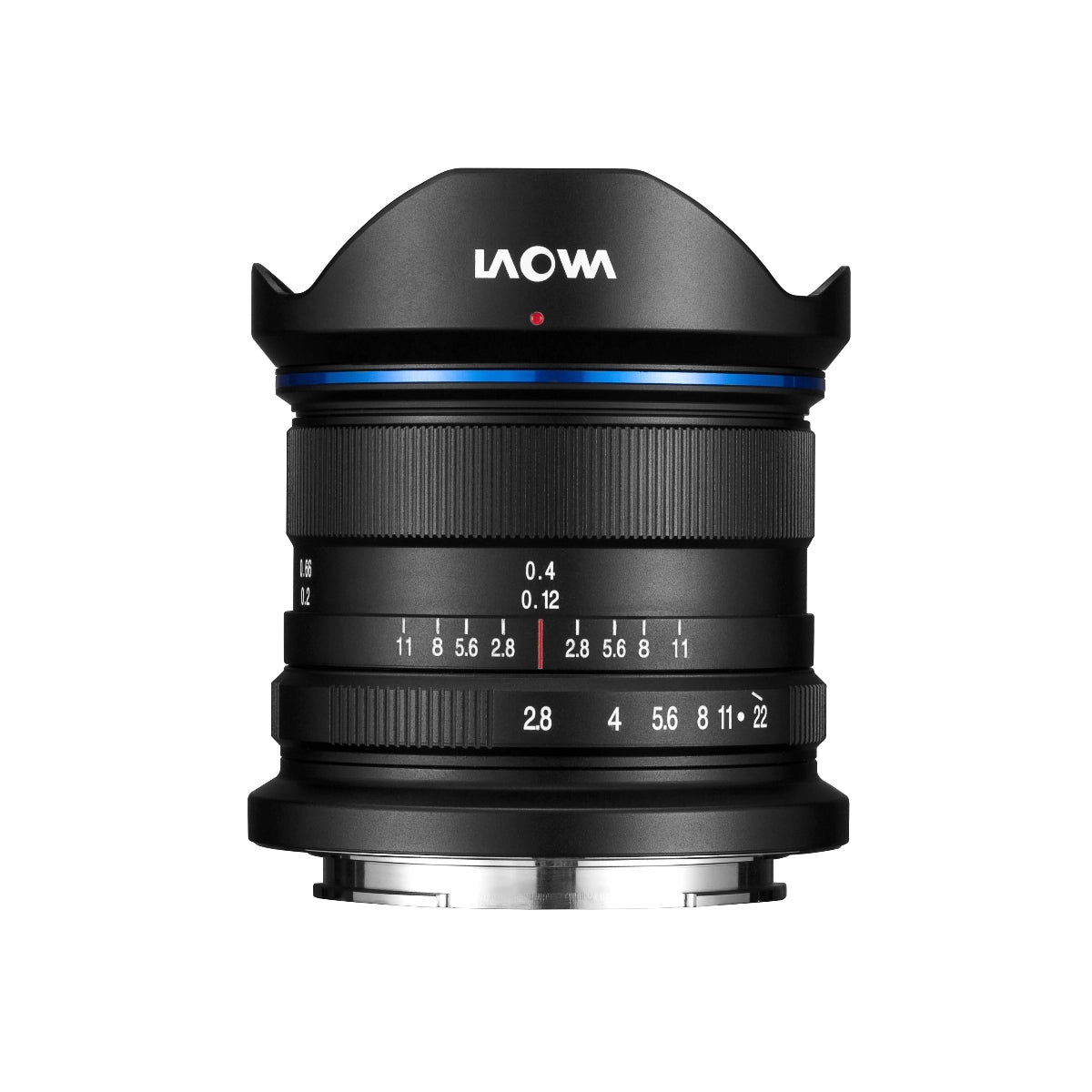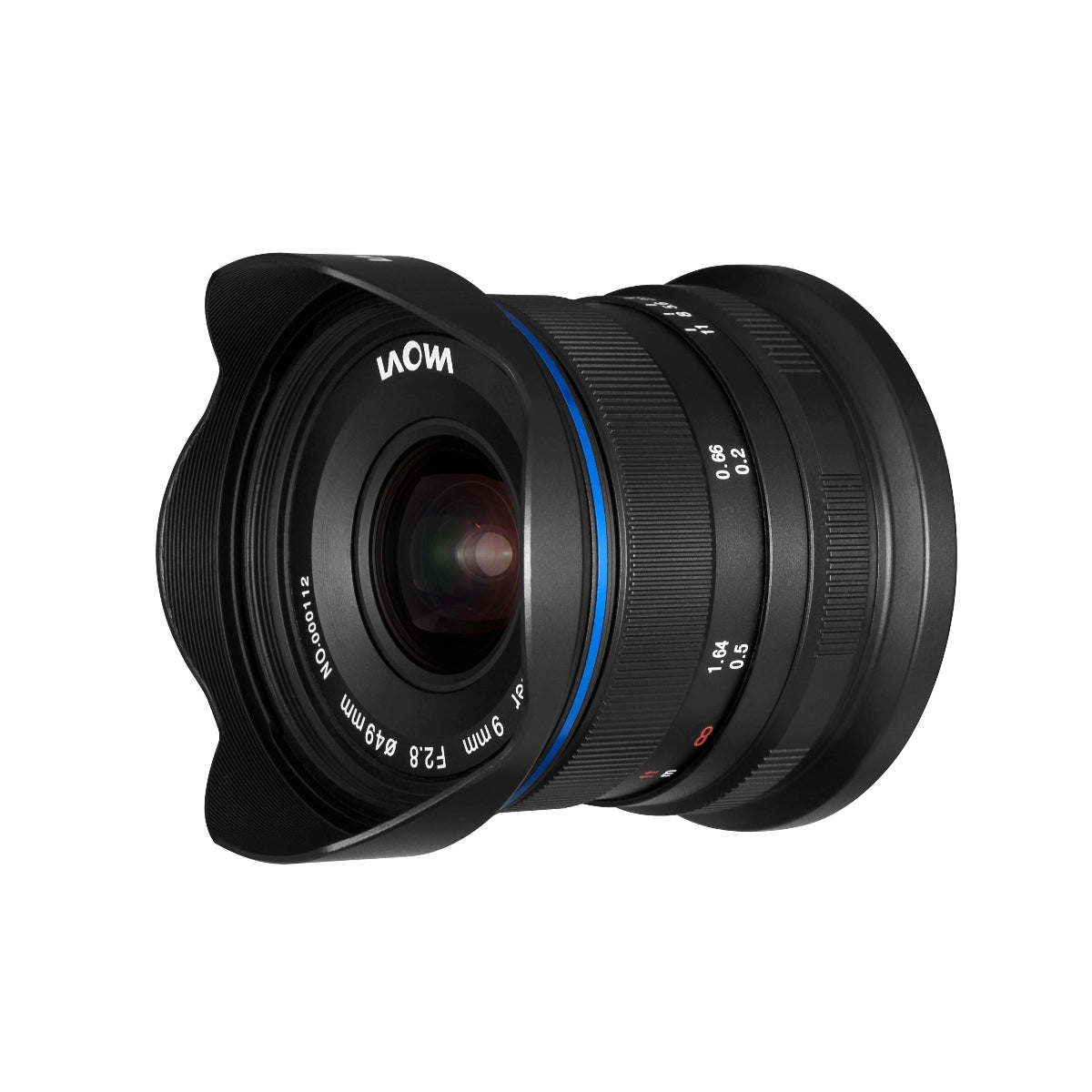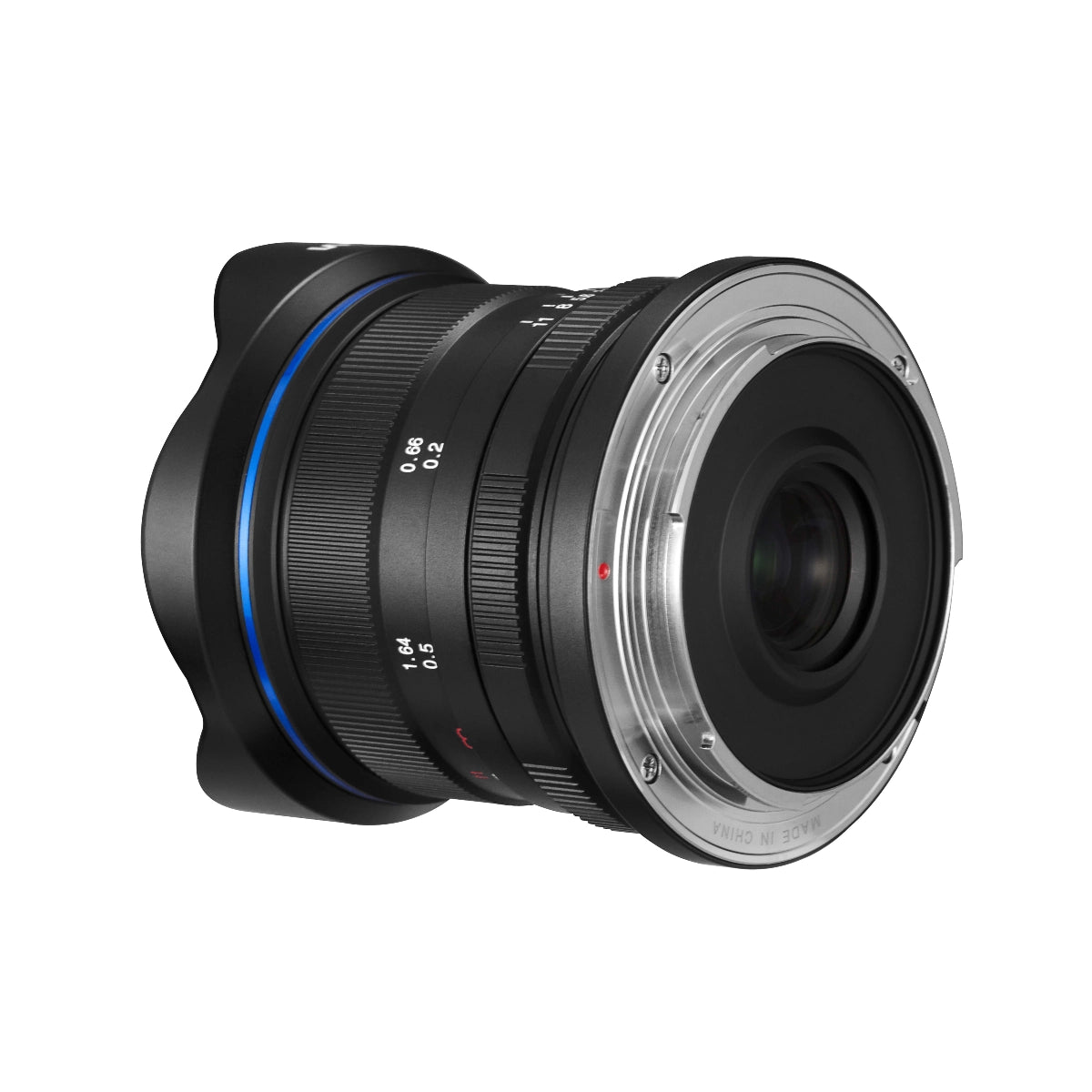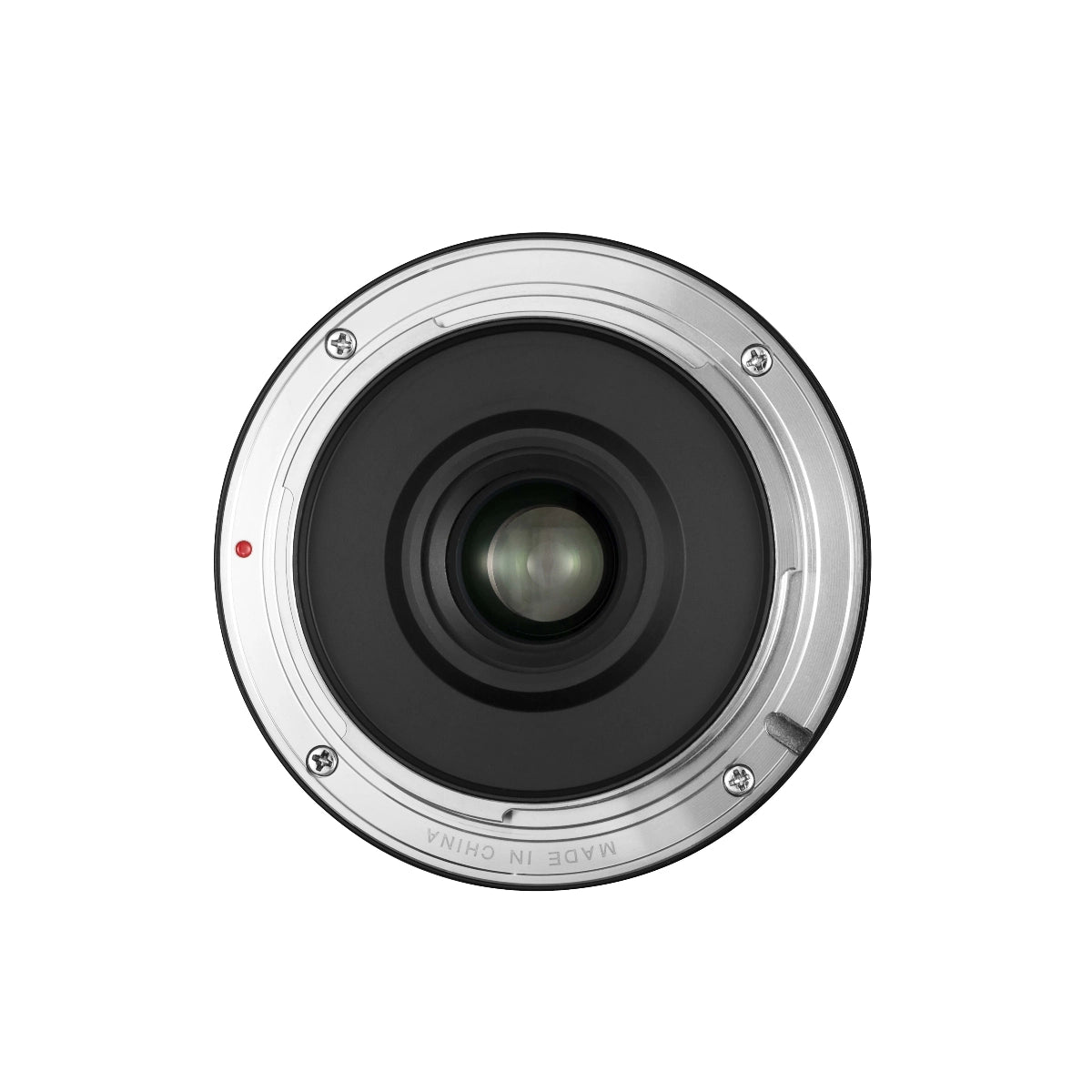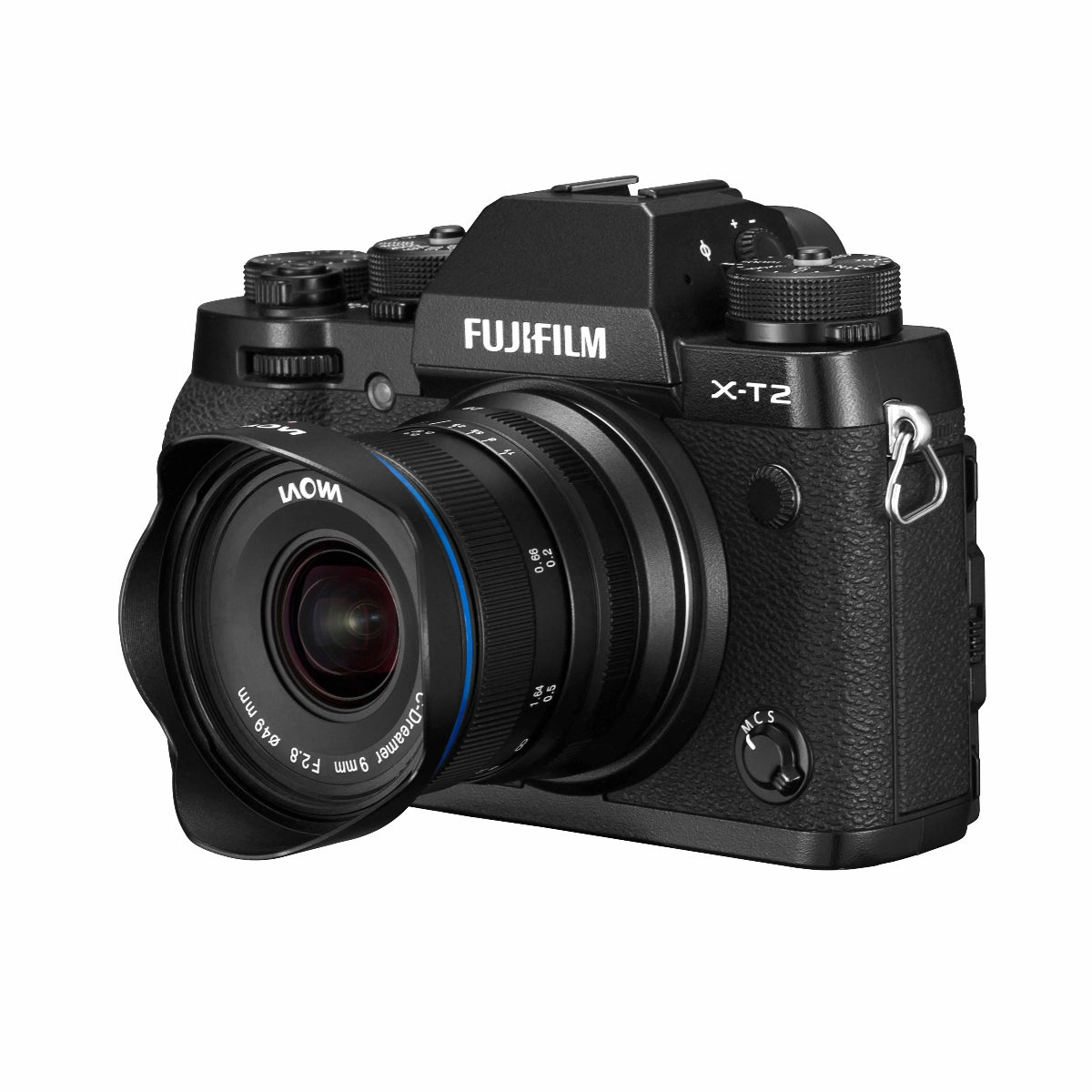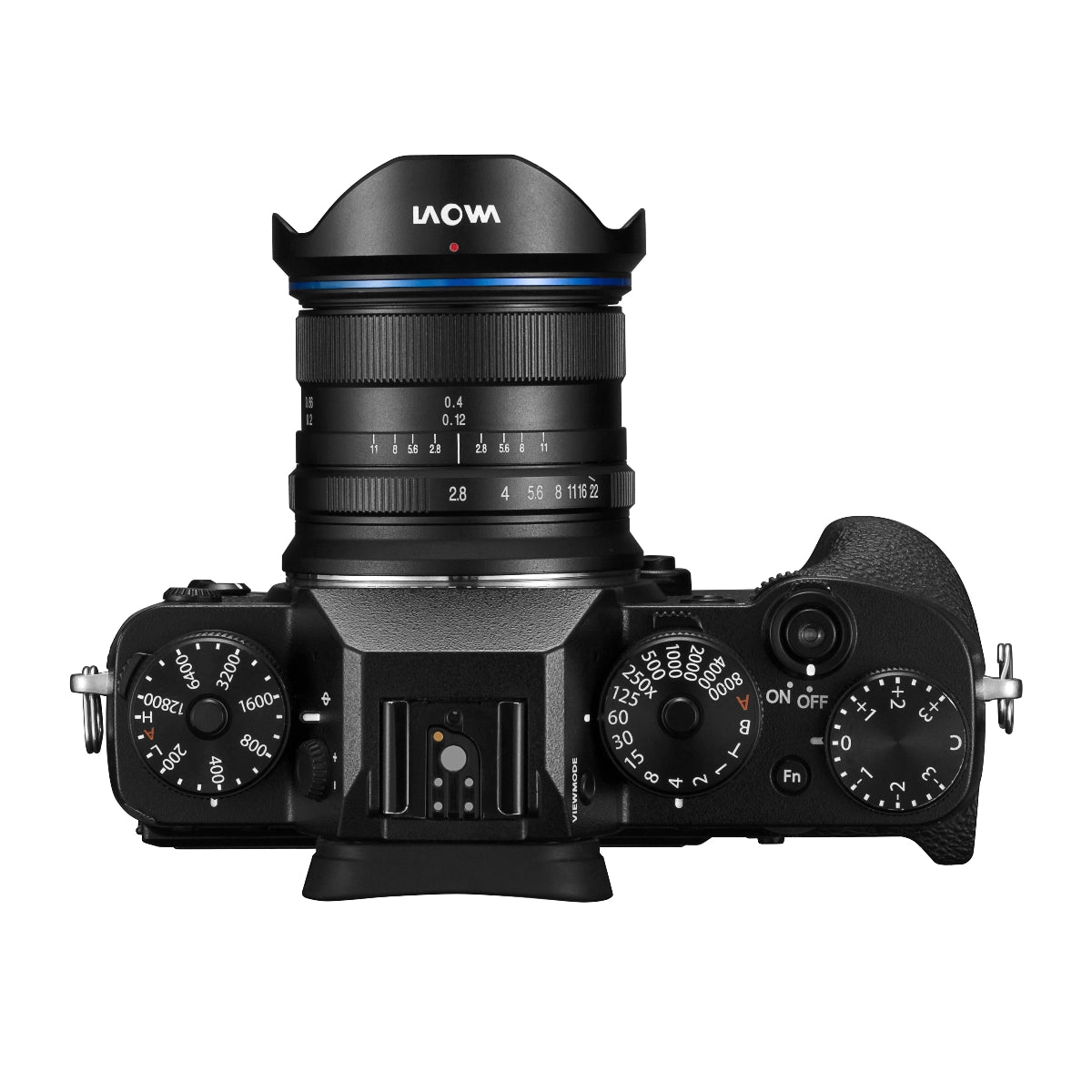Product Description
Laowa 9mm f/2.8 Zero-D Lens – Sony E-Mount
Ultra-Wide, Compact, and Distortion-Free
The Laowa 9mm f/2.8 Zero-D is an ultra-wide-angle prime lens designed specifically for APS-C format mirrorless cameras, offering an impressive 113° field of view and exceptional optical performance with close-to-zero distortion. With its compact, lightweight design, this lens is perfect for architectural photography, vlogging, aerial videography, and gimbal setups.

Key Features
- APS-C Compatibility – Optimised for APS-C mirrorless cameras, delivering an equivalent focal length of 13.5mm
- Ultra-Wide 113° Field of View – Captures expansive scenes with stunning detail and sharpness
- Fast f/2.8 Aperture – Ensures excellent low-light performance and creative depth-of-field control
- Zero-D (Zero Distortion) Design – Ideal for architectural and landscape photography, eliminating the need for post-correction
- Advanced Optical Construction – Includes 2 aspherical elements and 3 extra-low dispersion elements to minimise chromatic and spherical aberrations
- 49mm Filter Thread – Supports standard filters without requiring additional adapters

Compact and Durable Build
- Ultra-Lightweight and Portable – Weighing just 215g, this lens is perfect for mirrorless cameras, gimbals, and drone setups
- Frog Eye Coating – Dust- and water-resistant coating enhances durability for outdoor and extreme shooting conditions
- Manual Focus Control – Offers precise focusing for creative compositions
- Built-In Petal-Shaped Lens Hood – Reduces lens flare and stray light for cleaner images

Ideal for Hybrid Shooters
- Vlogging & Gimbal Use – The lightweight design and ultra-wide perspective make it an excellent choice for handheld shooting
- Aerial Videography – Compatible with DJI Inspire 2 (via the DL mount), offering incredible ultra-wide coverage for drone cinematography
- Micro Four Thirds Compatibility – Also available in an MFT mount, making it suitable for BMPCC 4K, Panasonic GH series, and Olympus OM-D series

Specifications
- Focal Length: 9mm (13.5mm equivalent on APS-C)
- Maximum Aperture: f/2.8
- Minimum Aperture: f/22
- Angle of View: 113° (100° on MFT cameras)
- Optical Design: 15 elements in 11 groups
- Filter Thread: 49mm
- Weight: Approx. 215g

Why Choose the Laowa 9mm f/2.8 Zero-D?
- Zero-Distortion ultra-wide-angle performance
- Compact and lightweight for vlogging, travel, and handheld shooting
- Fast f/2.8 aperture for exceptional low-light capabilities
- Precision optics with advanced coatings for sharp and vibrant images
The Laowa 9mm f/2.8 Zero-D Lens is the perfect ultra-wide solution for photographers and videographers who demand exceptional image quality in a compact and portable form.
Payment & Security
Your payment information is processed securely. We do not store credit card details nor have access to your credit card information.

